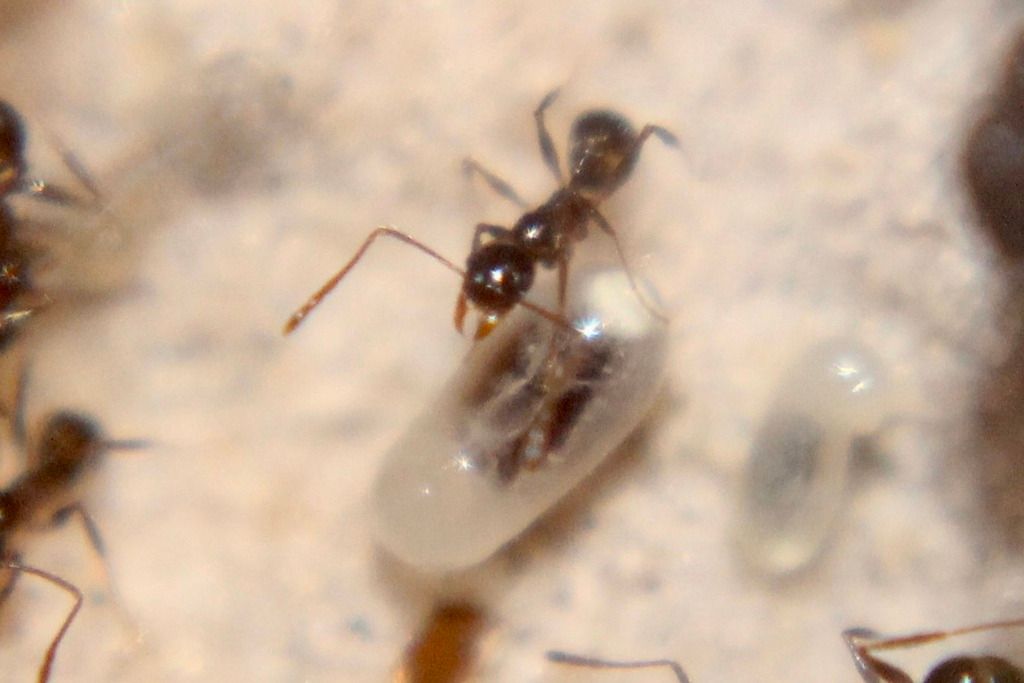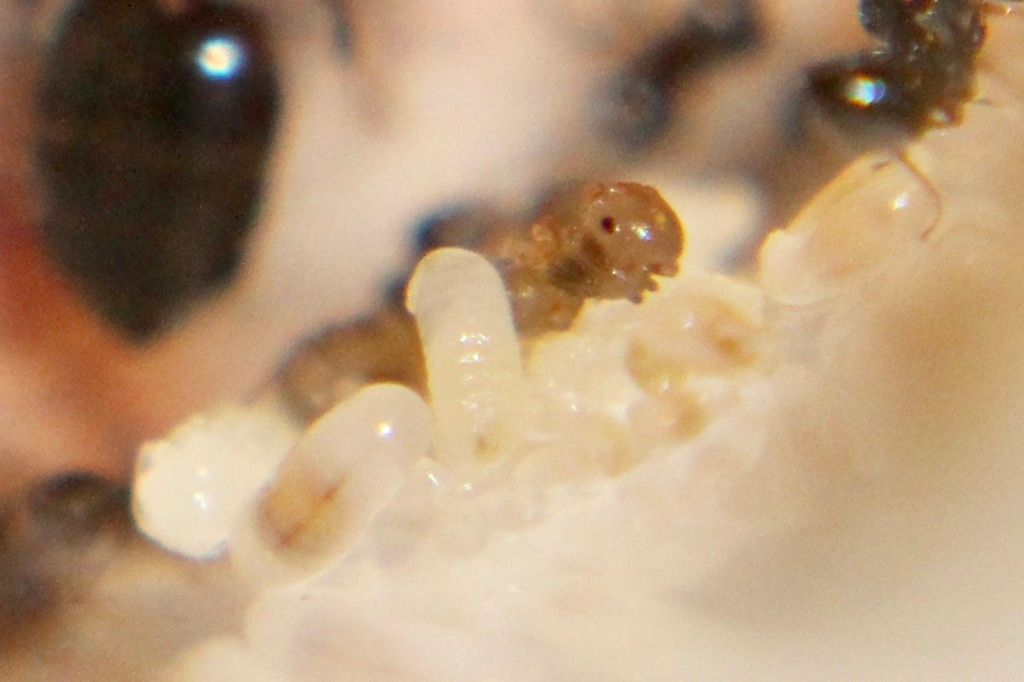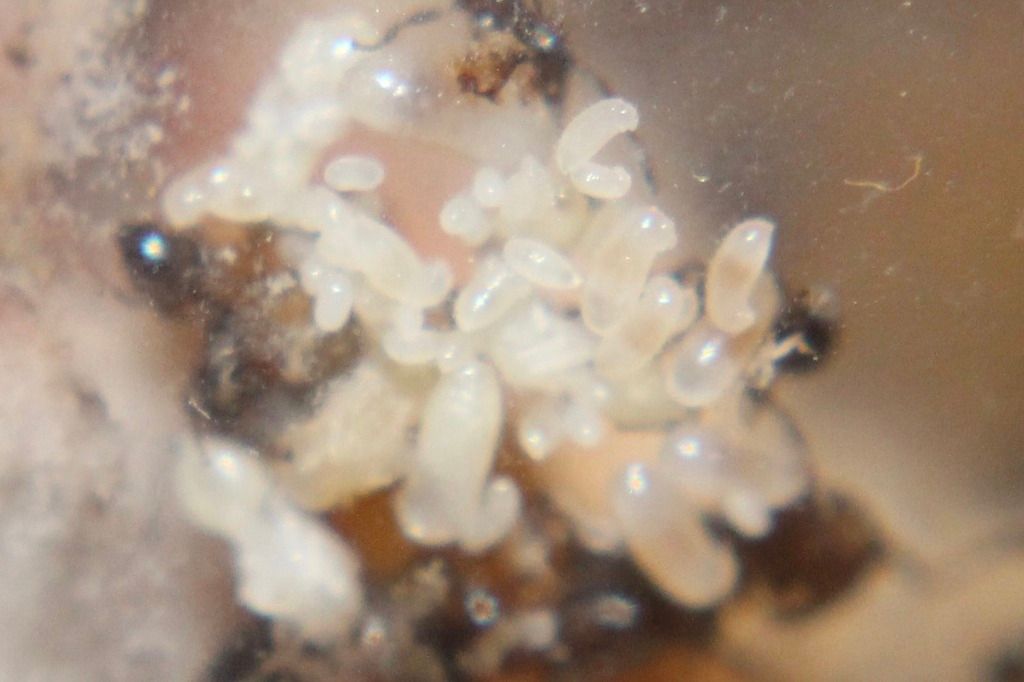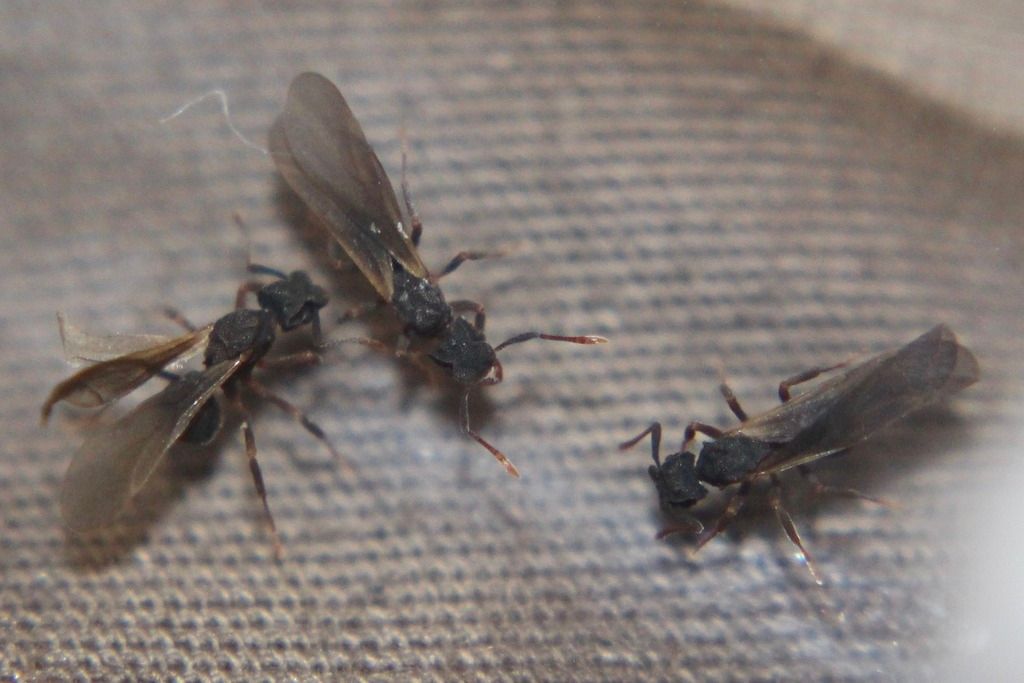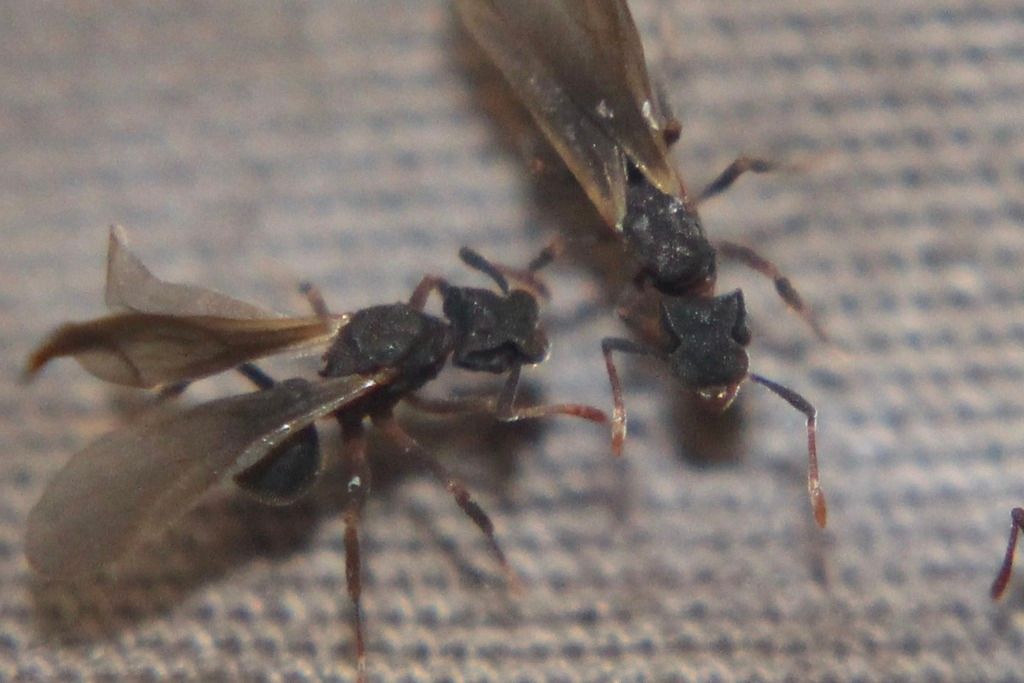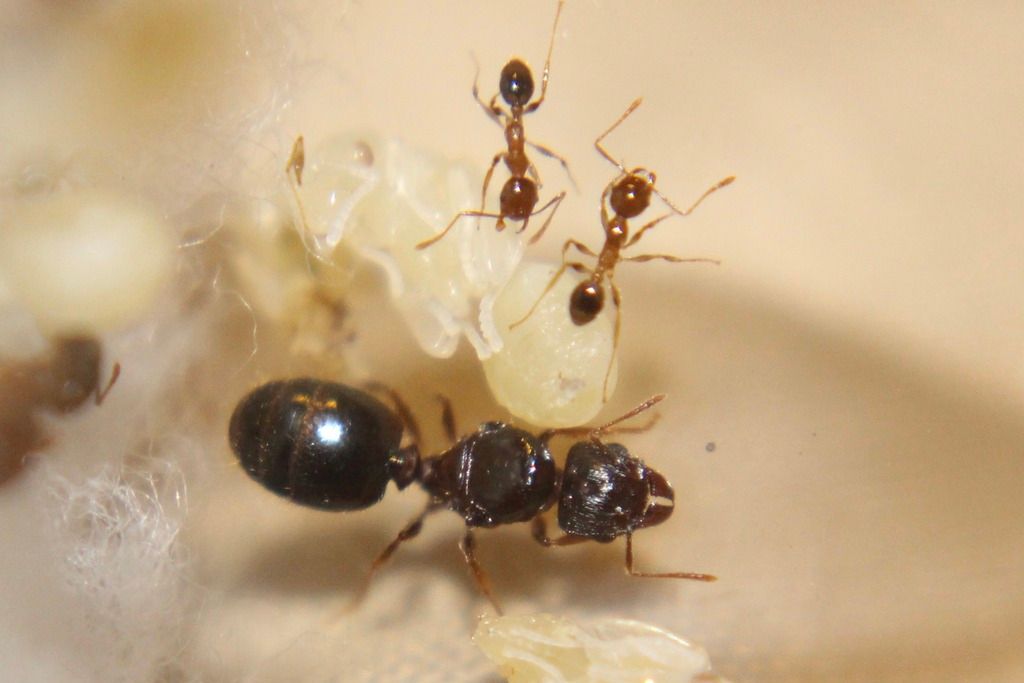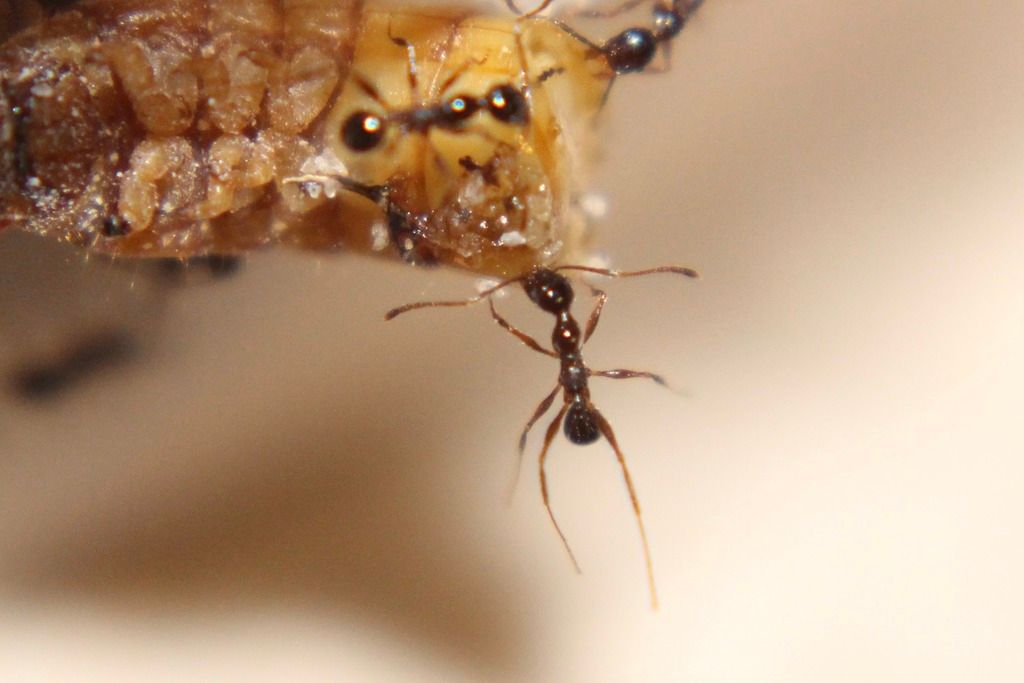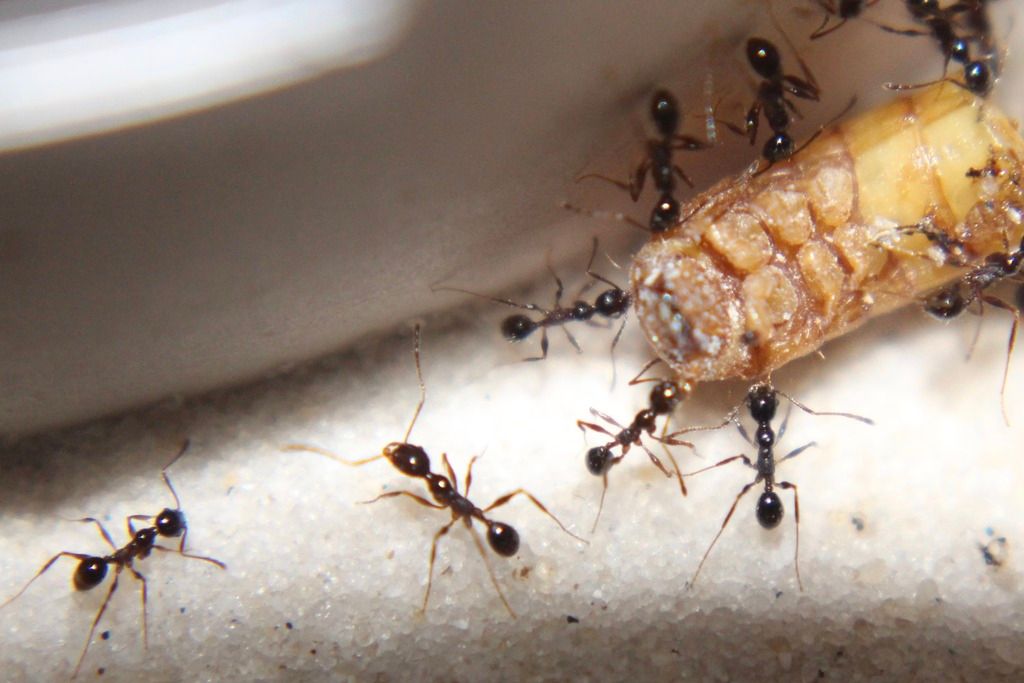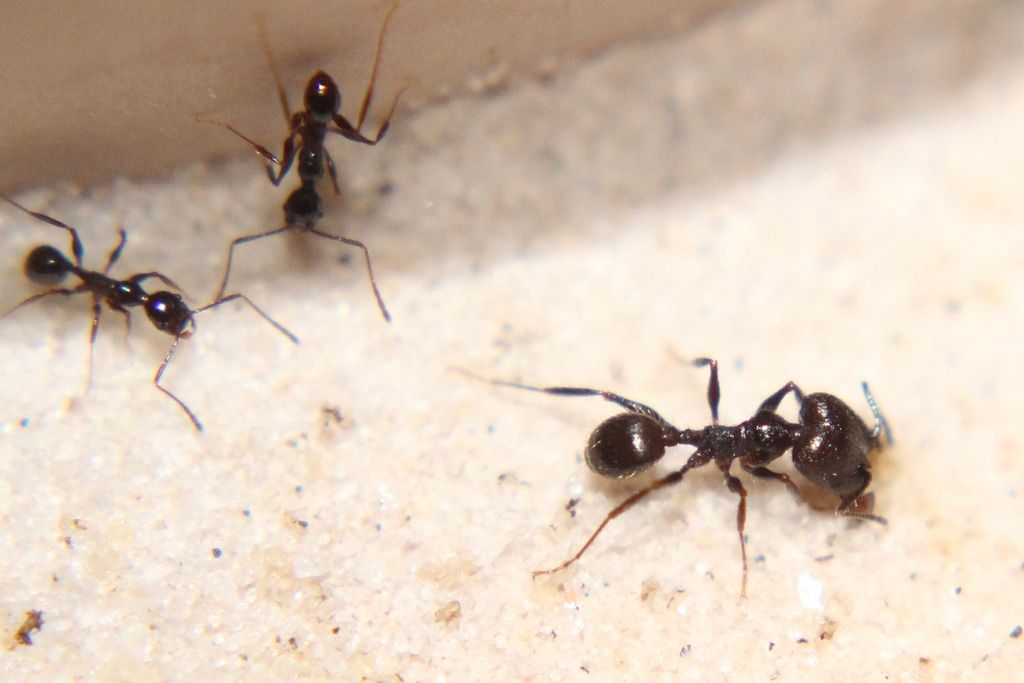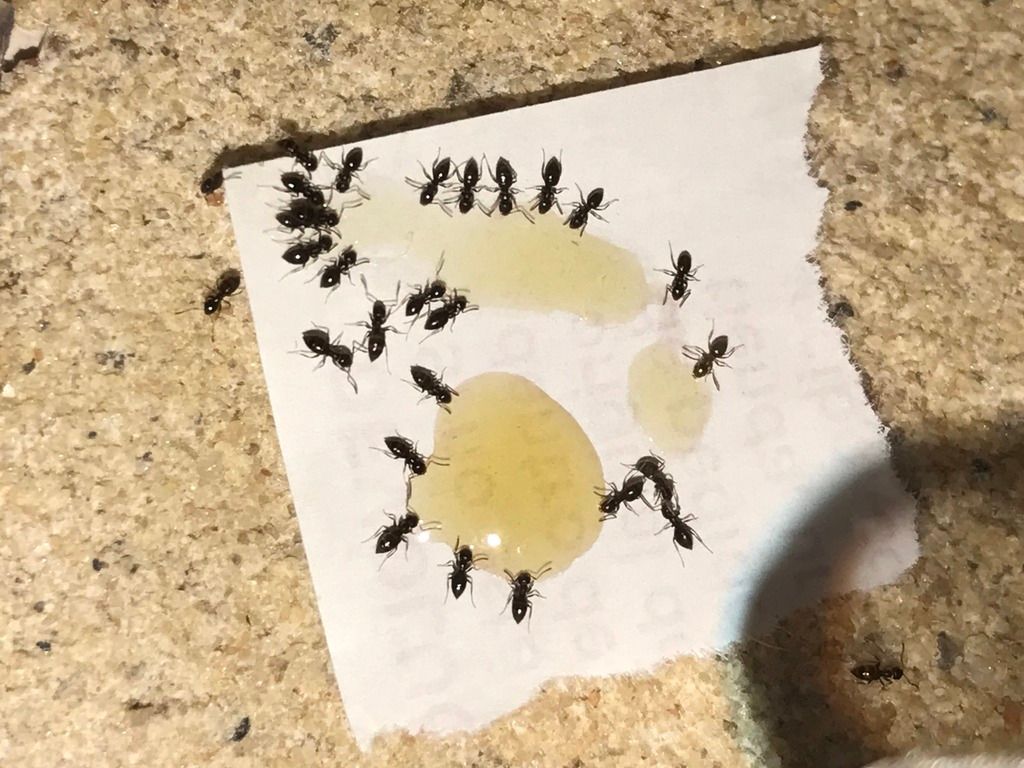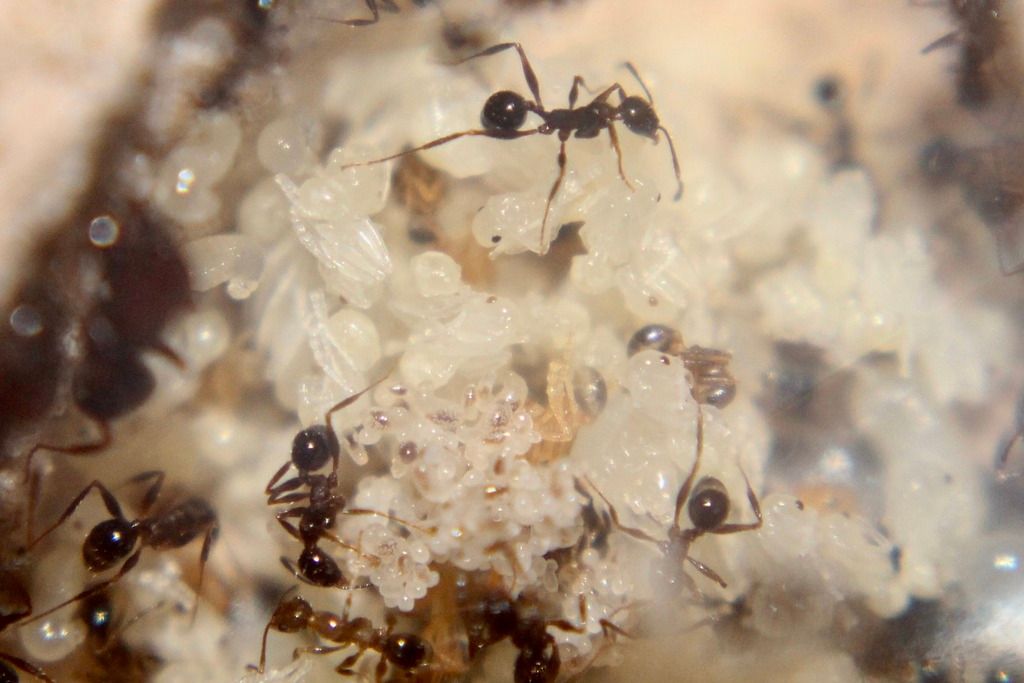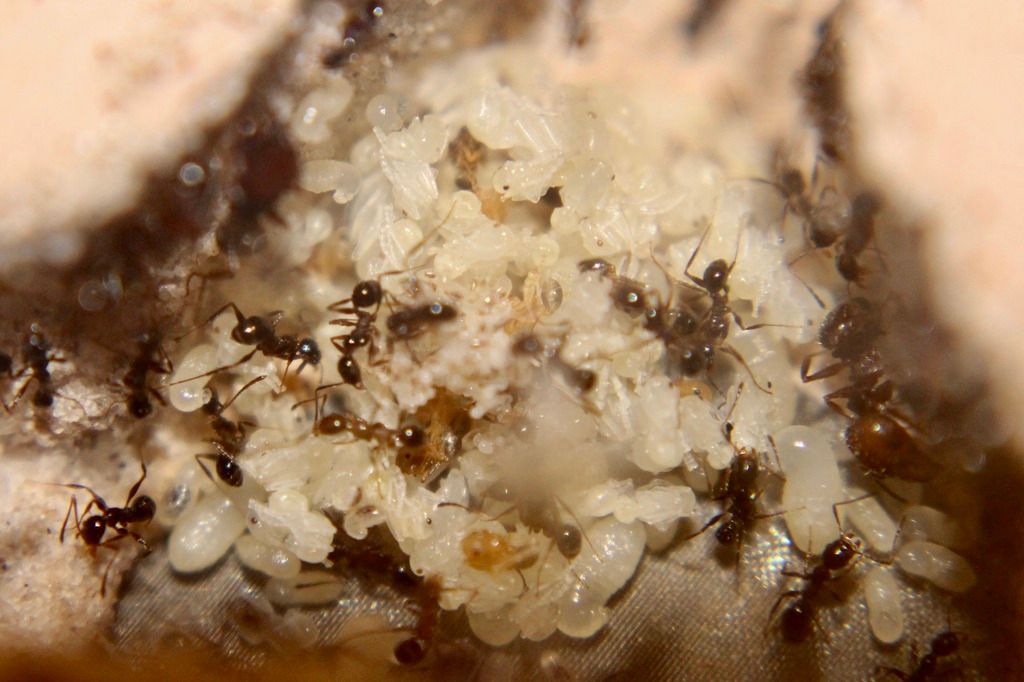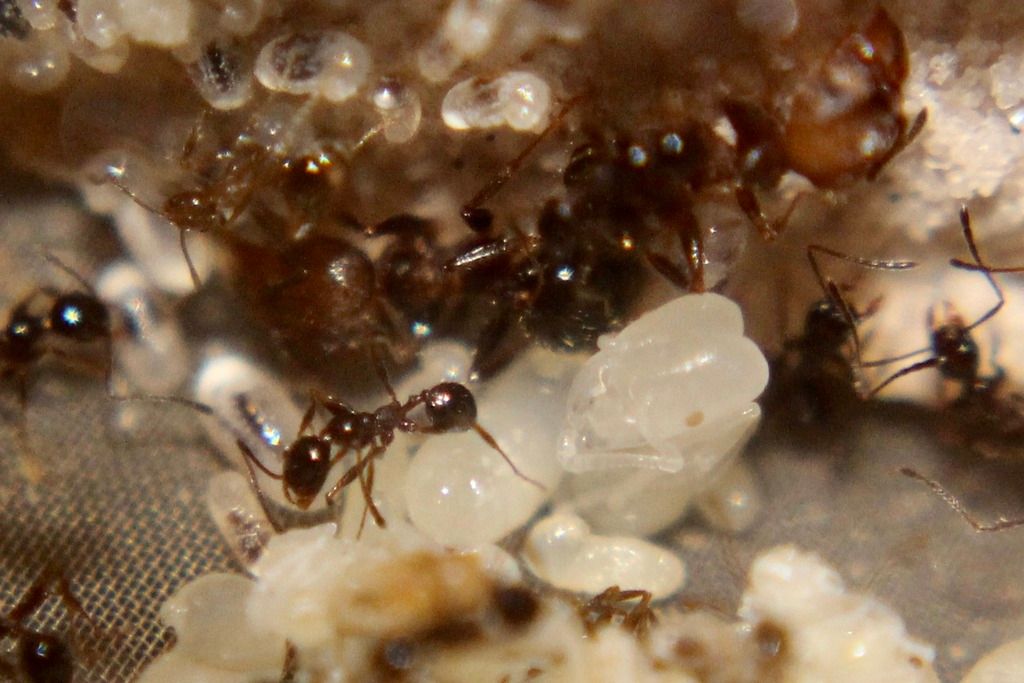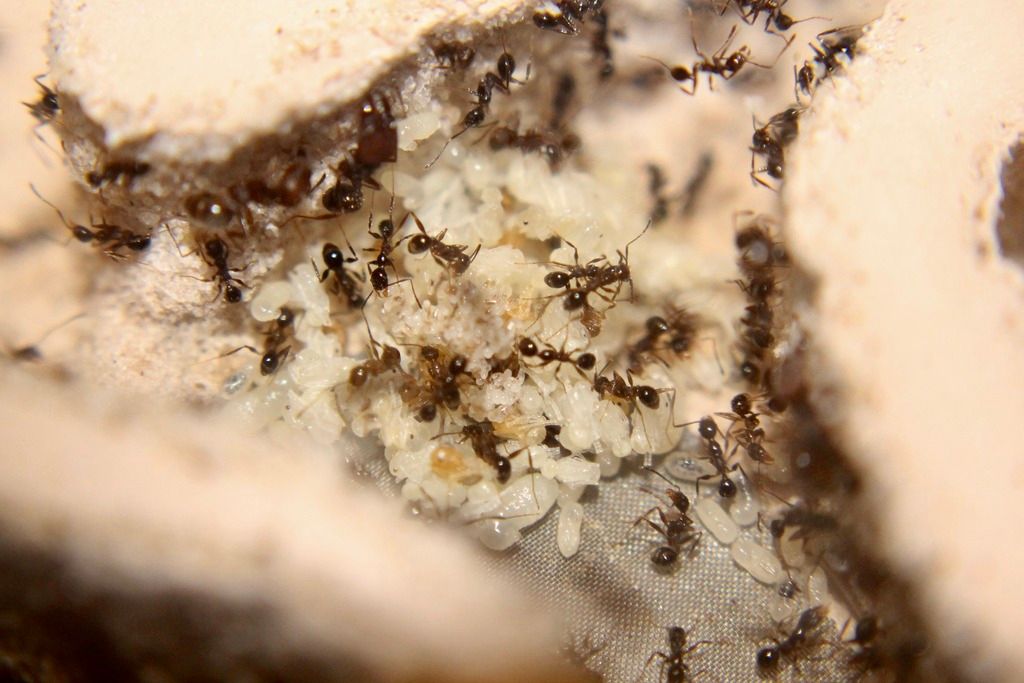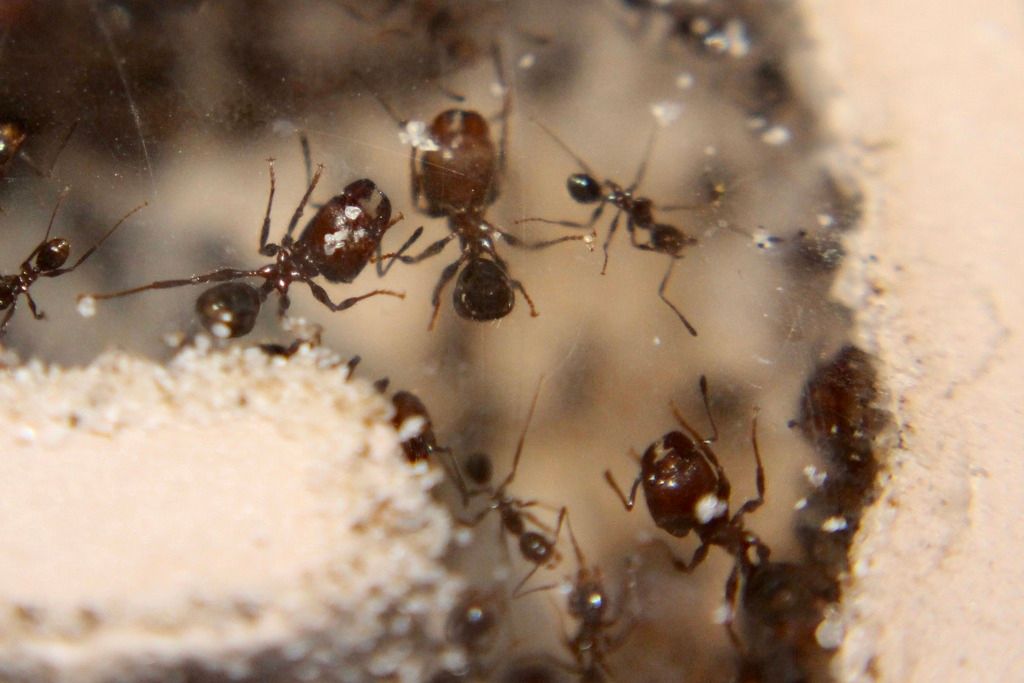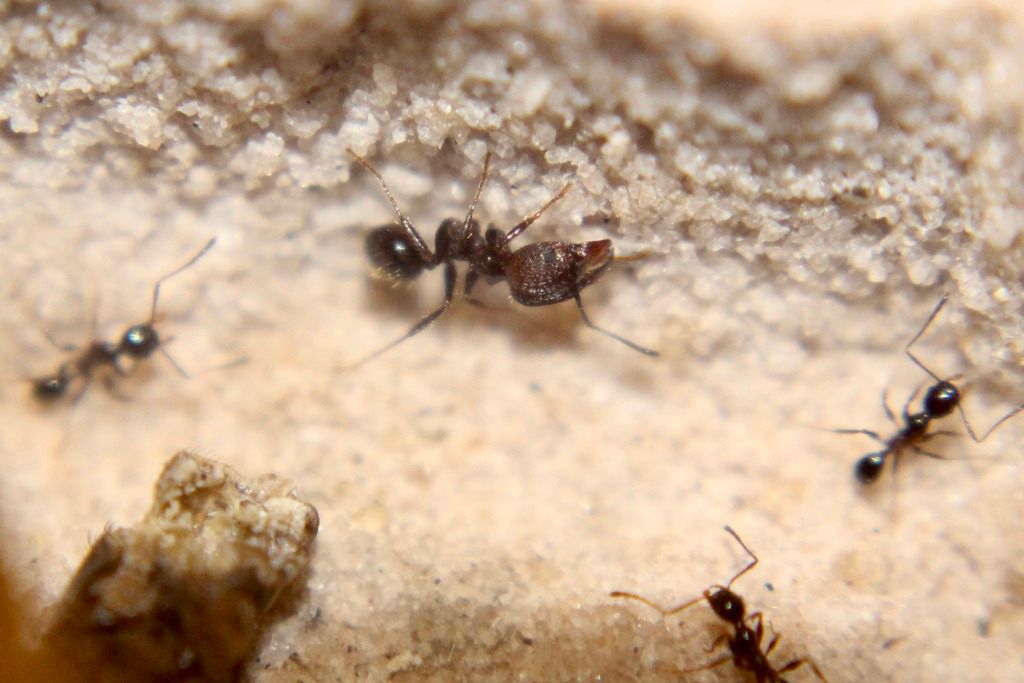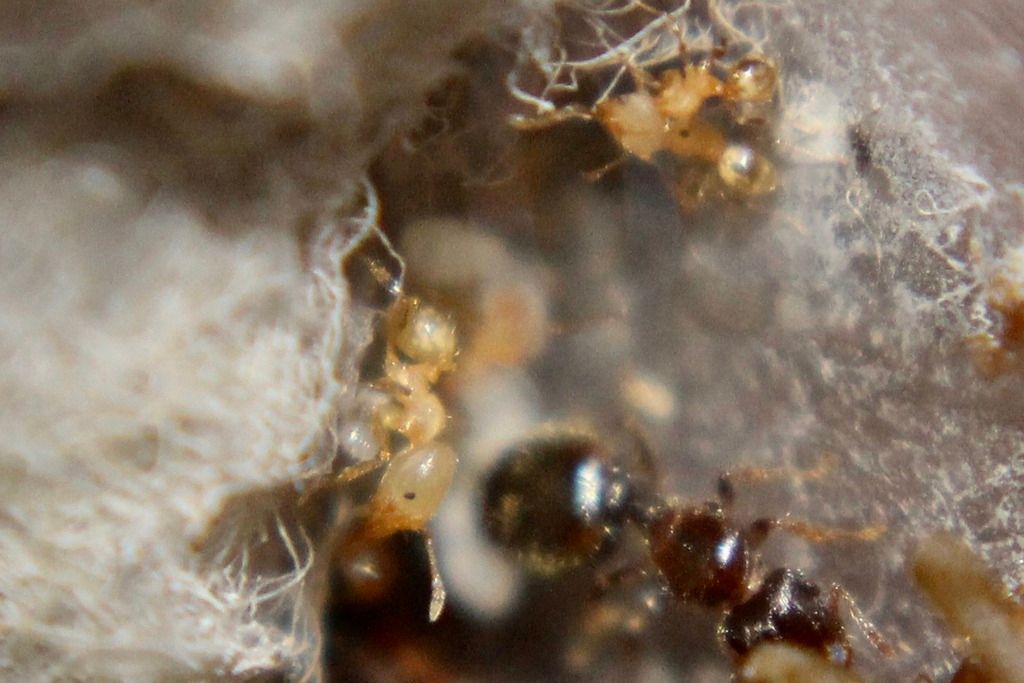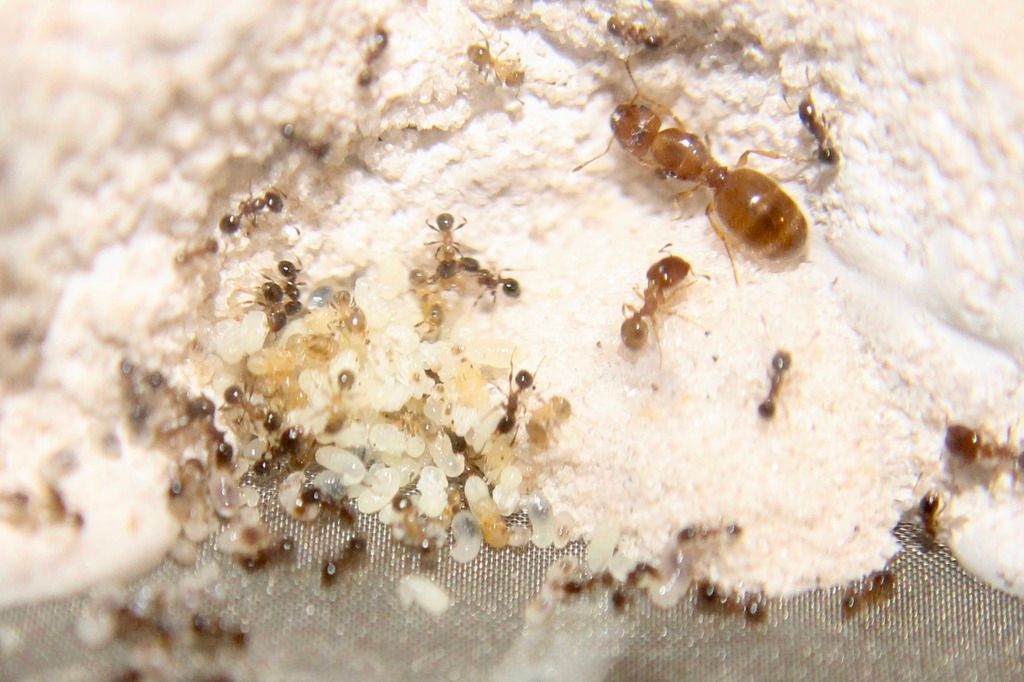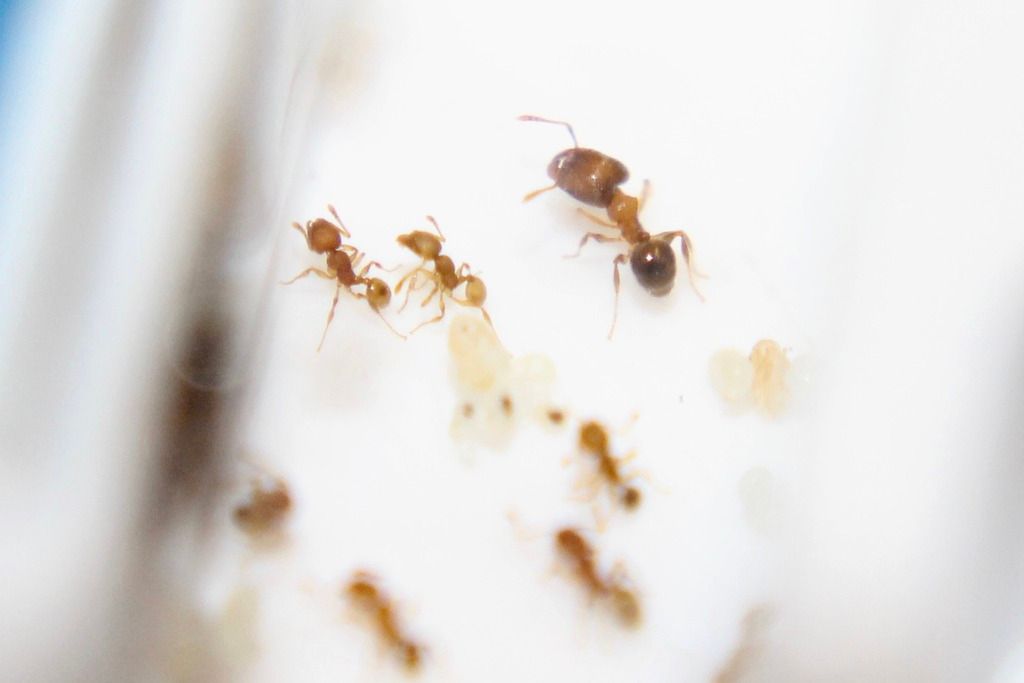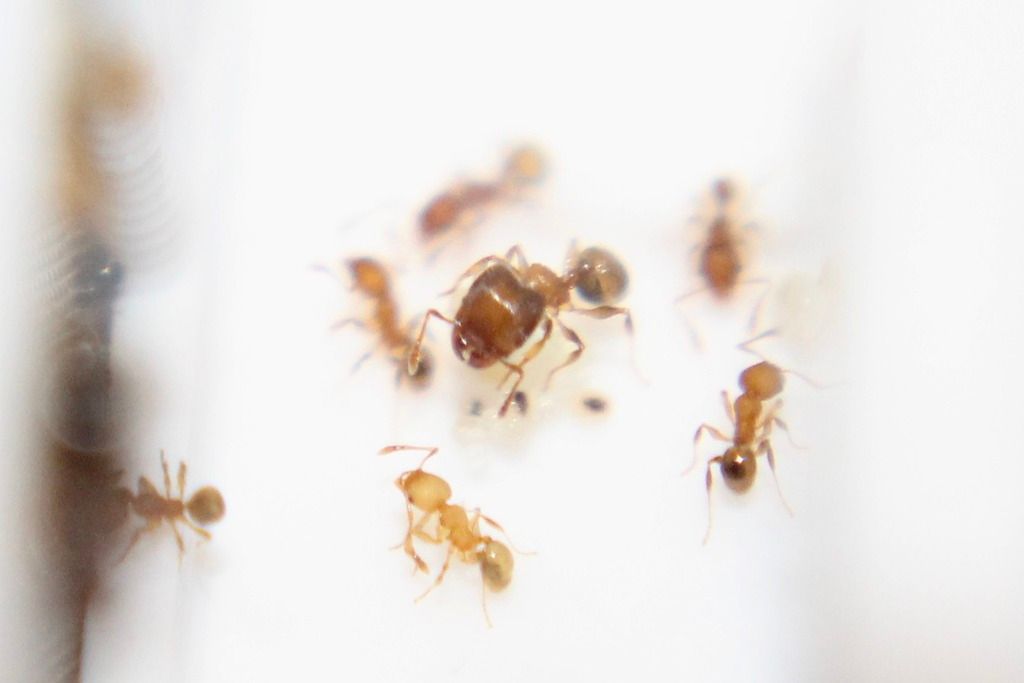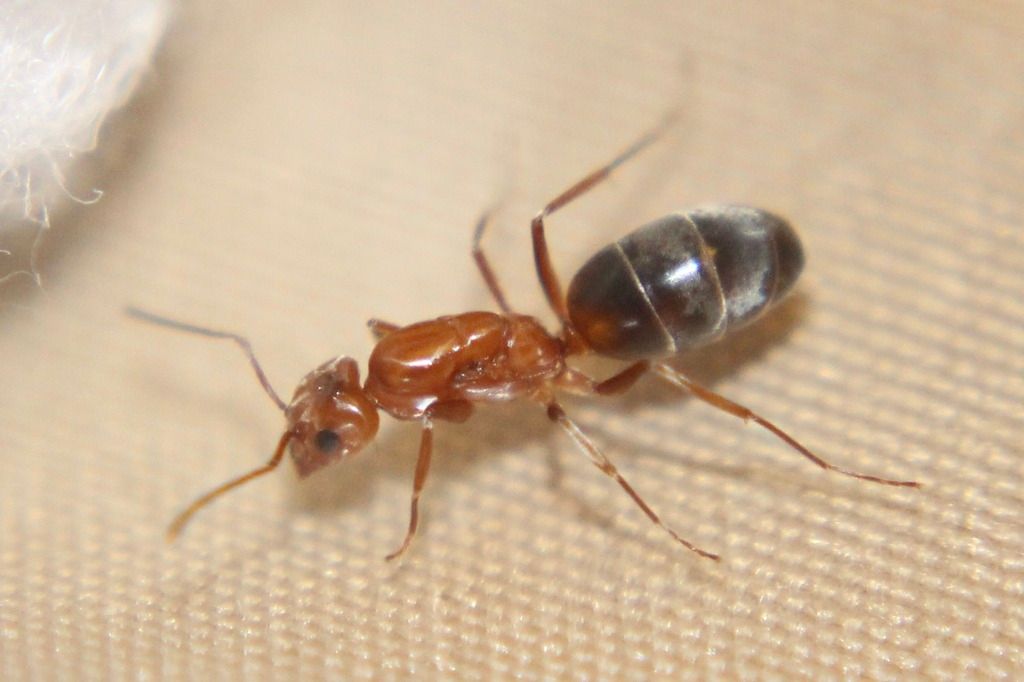Brachmyrmex patagonicus
I don't have any pictures of these since the glass in their test tube is really dirty, but they are doing great and probably have 60-70 workers and just got a huge pile of 25-35 pupae in just a few days. This colony is different from my others because their workers come in separate generations. The pupae that just appeared will be only their second generation of workers. Most of the workers they have now are just nanitics (There were 7 queens at one point). This colony is about 5.5 months old.
I also have just ordered an Atom C formicarium and this colony will be going in it!
Pheidole bicarinata
This colony has around 30-40 workers now, and still just one major. But, they just got 2 new major pupae! Finally. I also have moved them out of their test tube and into their new Tar Heel Ants Ant Block formicarium, and they are doing great. They had a lot of larvae when I moved them in and now lots of those have pupated.
These pictures are from the day after I put them into their ant block, exactly one week ago.
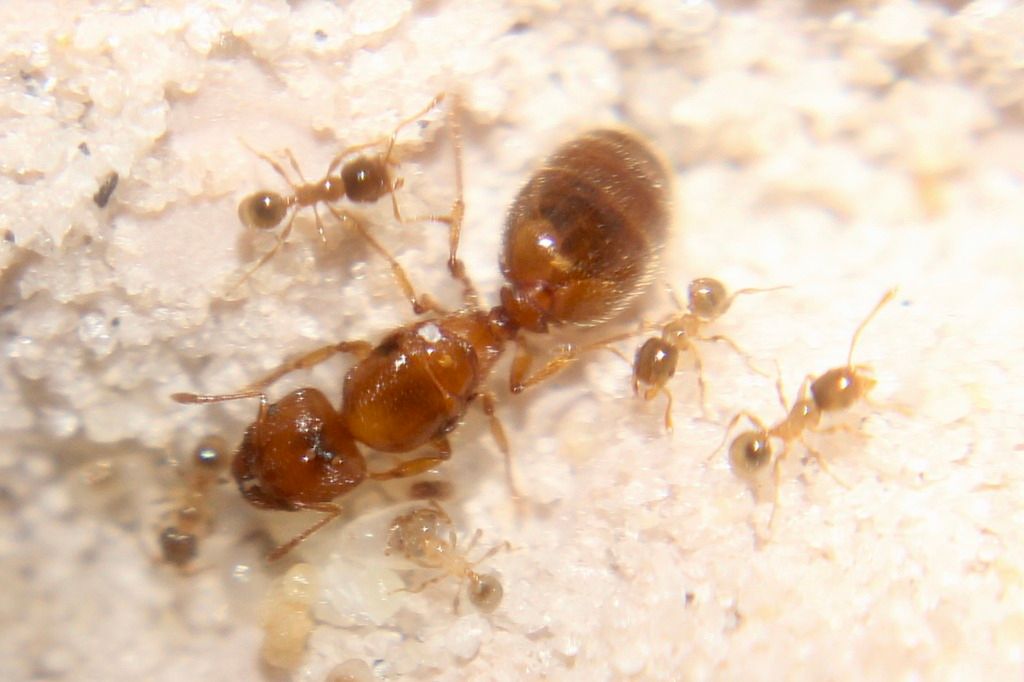
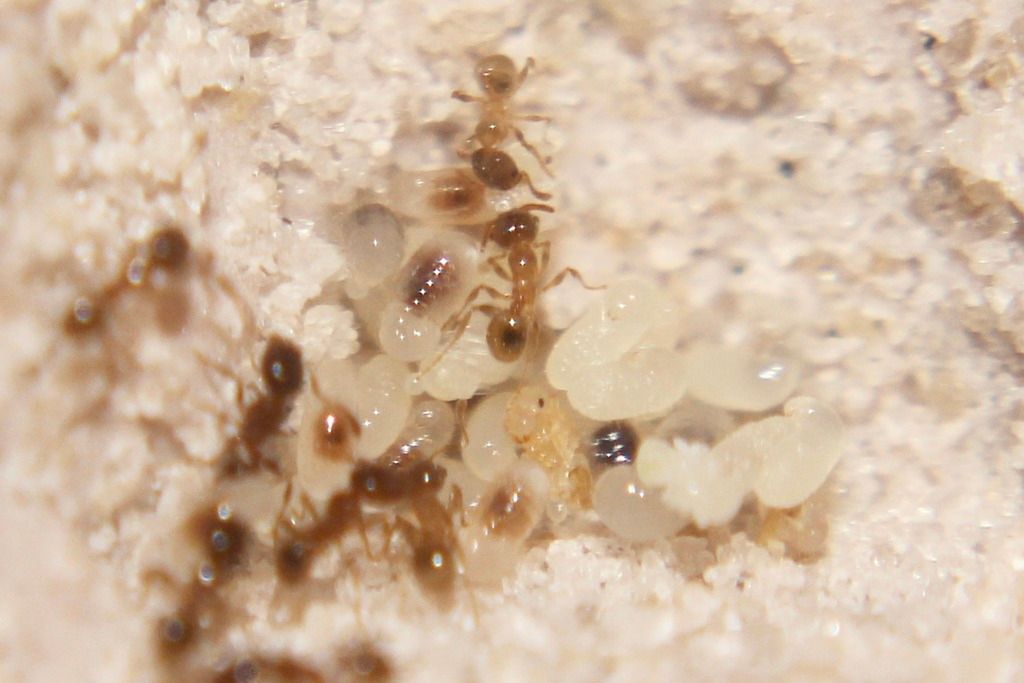
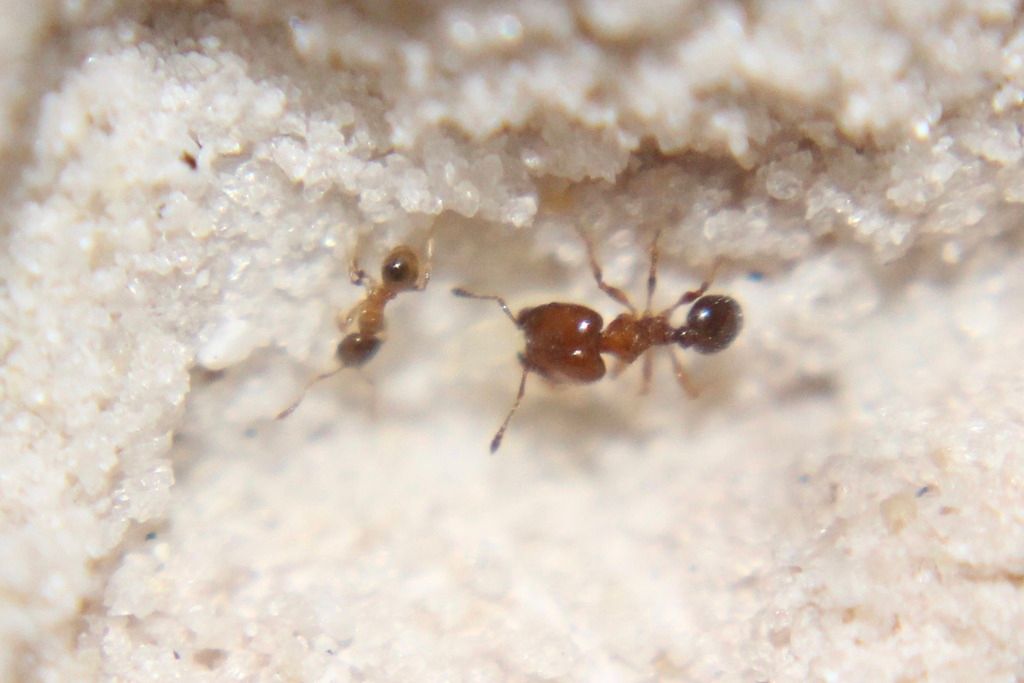
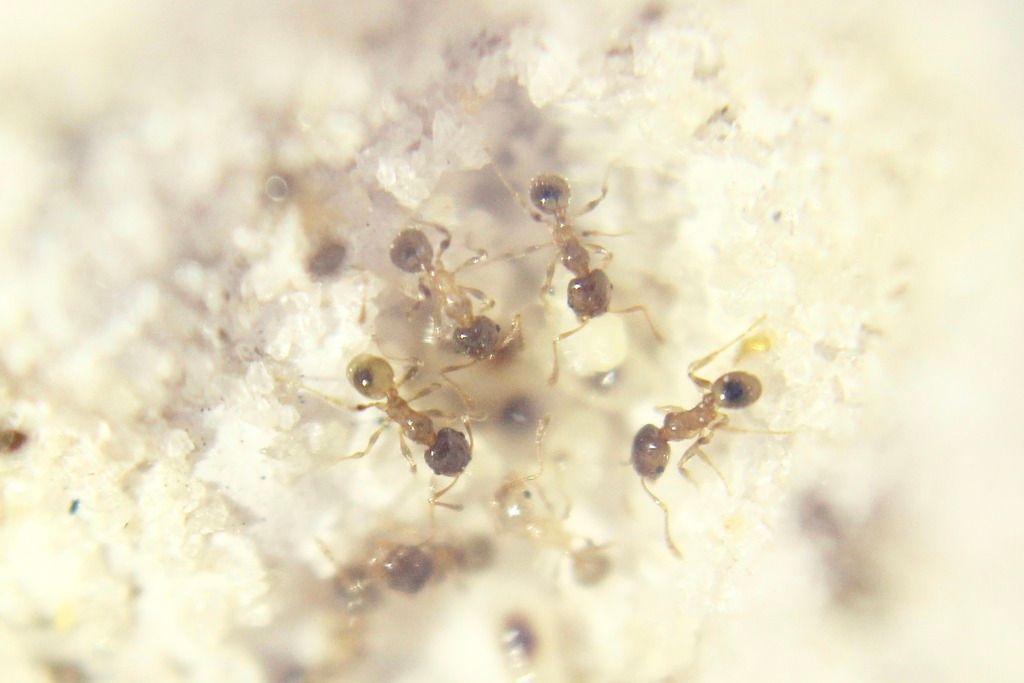
And here are pictures from yesterday. I adjusted the lighting on the second one so you can see the brood easier.
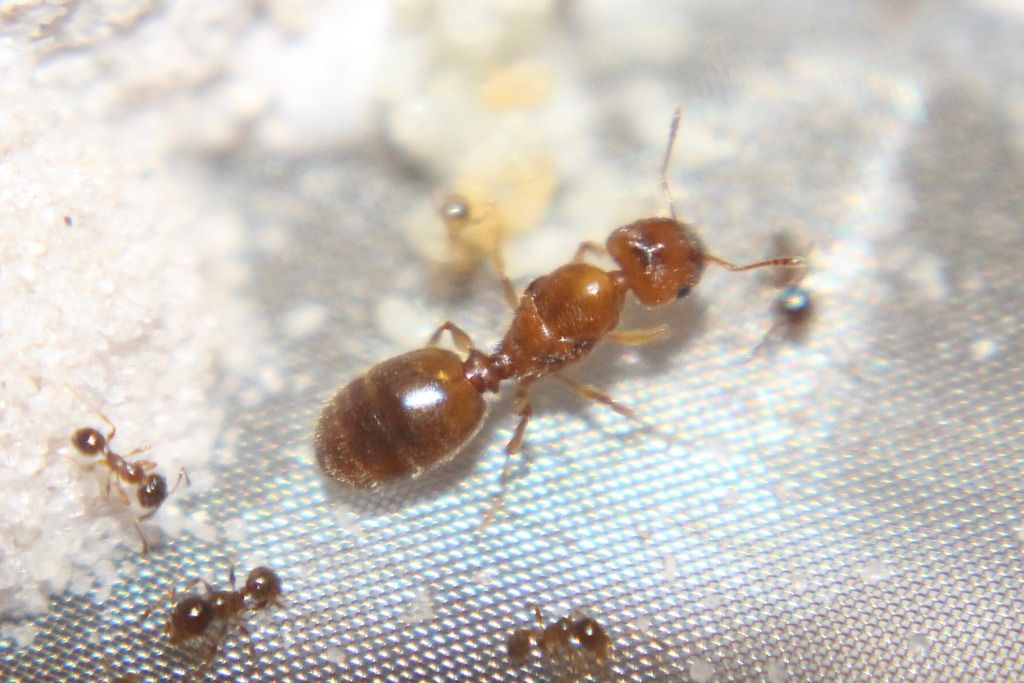
Notice the major pupa in the top left corner. The other one is at the top of the picture and you can only see her gaster.
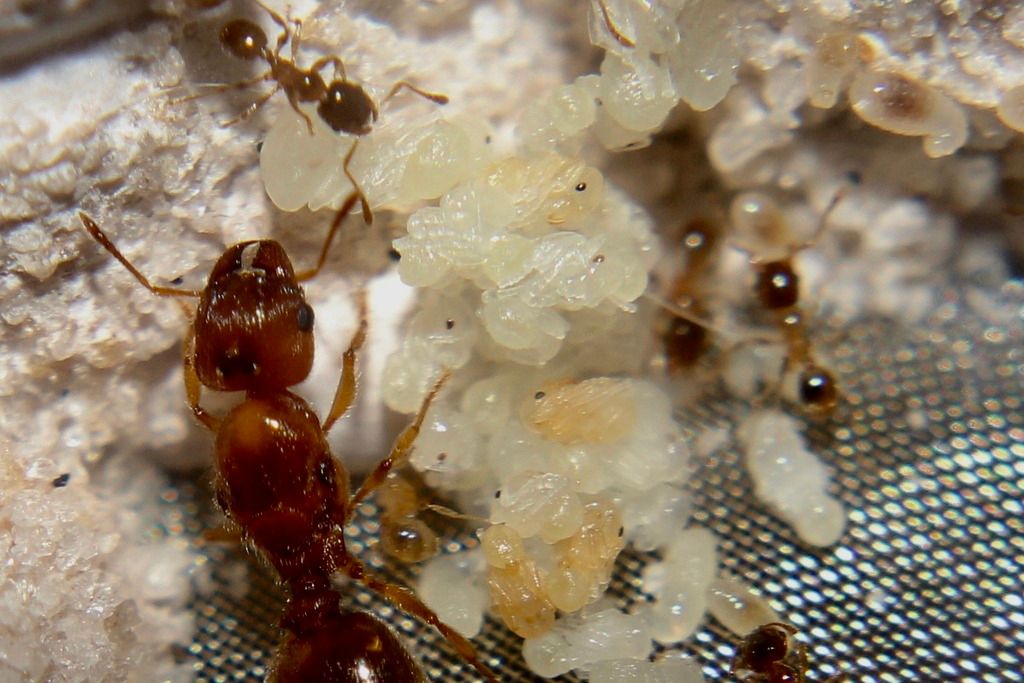
Pheidole navigans
This used to be Pheidole moerens, but I have recently found out that they are actually Pheidole navigans. The two species are very similar.
This colony had around 30 workers, but after I took these pics, more than 5 workers died, including the only major. They also don't have a lot of brood, but the majority of the colony is callow (recently eclosed).
The queens of this species are about 3mm.

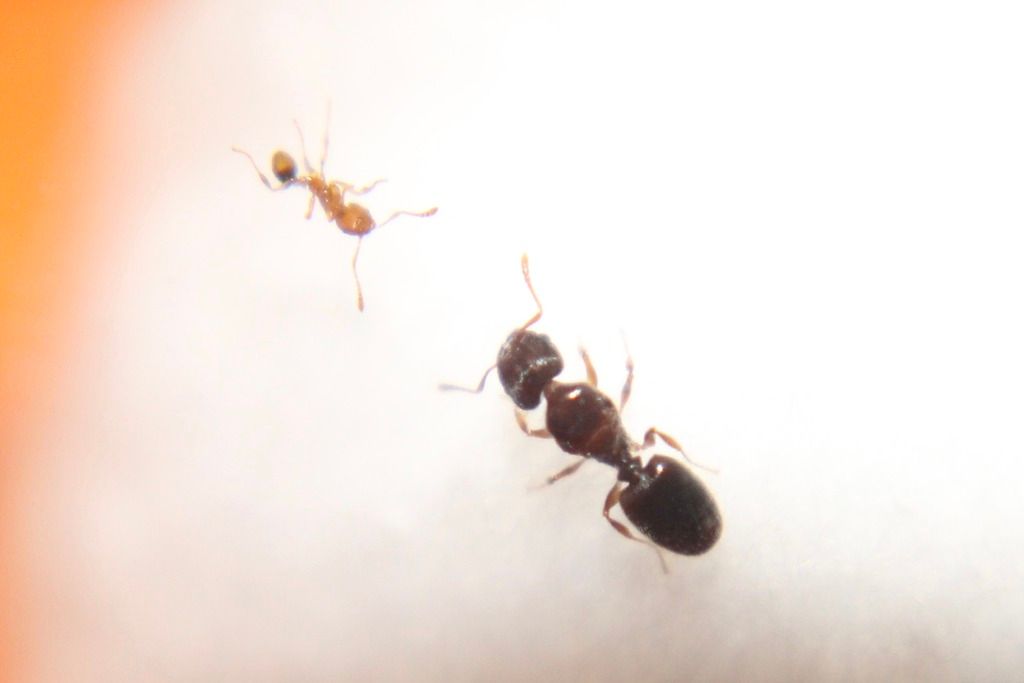
Pheidole obscurithorax
My P. obscurithorax colony is doing awesome! In their last update, I believe they had 2 majors and 3 major pupae. Now they have 6 majors and several major larvae and pupae. I don't know when this colony will stop making more majors! The newest ones are quite a bit larger than the first majors, and they have a different coloration. They are starting to look more and more similar to the ones in the wild. This colony also has tons of larvae and pupae. Just overall, doing awesome. I'm hoping they will have a minor worker population boom instead of so many majors.. it seems like they still have around 50-60 minors.
Pheidole megacephala
These are not doing good. One of the colonies appear to have eaten all of their eggs. The other colony does have some eggs and a pupa that will hatch soon. There was also a female alate pupa that hatched a couple days ago, but they killed her after only one day. I expected that, lol. Still interesting to see an alate eclose in a tiny colony.
I'm hoping the other colony's queen will start laying eggs again..
Solenopsis invicta
My oldest colony, my S. invicta colony which is now 9 months old, has over 200 workers now. They would have several times as many workers as this if I would've been heating them their whole life. But I don't need this colony to have a population boom. I like their gradual growth.
I have also been catching new S. invicta queens this winter, and I have a 2-queen colony that just got their first nanitic, and it look like there will be around 10 more on the way. It was 78 F degrees today so lots of colonies of this species were having nuptial flights and I caught more queens.
Dorymyrmex bureni
This colony was doing very well for a while, but that all suddenly crashed down as the queen stopped eating and they slowing ate their brood, and more workers died. After about a month of them not doing well, the colony has now passed away. RIP: July 2016-December 2016
Crematogaster ashmeadi
If you've been following this journal, you may know that this colony was not growing for while but suddenly were doing great once I started heating them. They had lots of pupae hatching every day, and I was so excited for them to explode in population. But in December, the queen of this colony died. I was in shock, because this was probably my favorite colony at the time and this species is so rare to find. The entire summer, I only saw 2 queens of this species, and this queen was one of them. The colony had 20 workers and they were doing the best they have ever been. RIP: June 2016-December 2016
